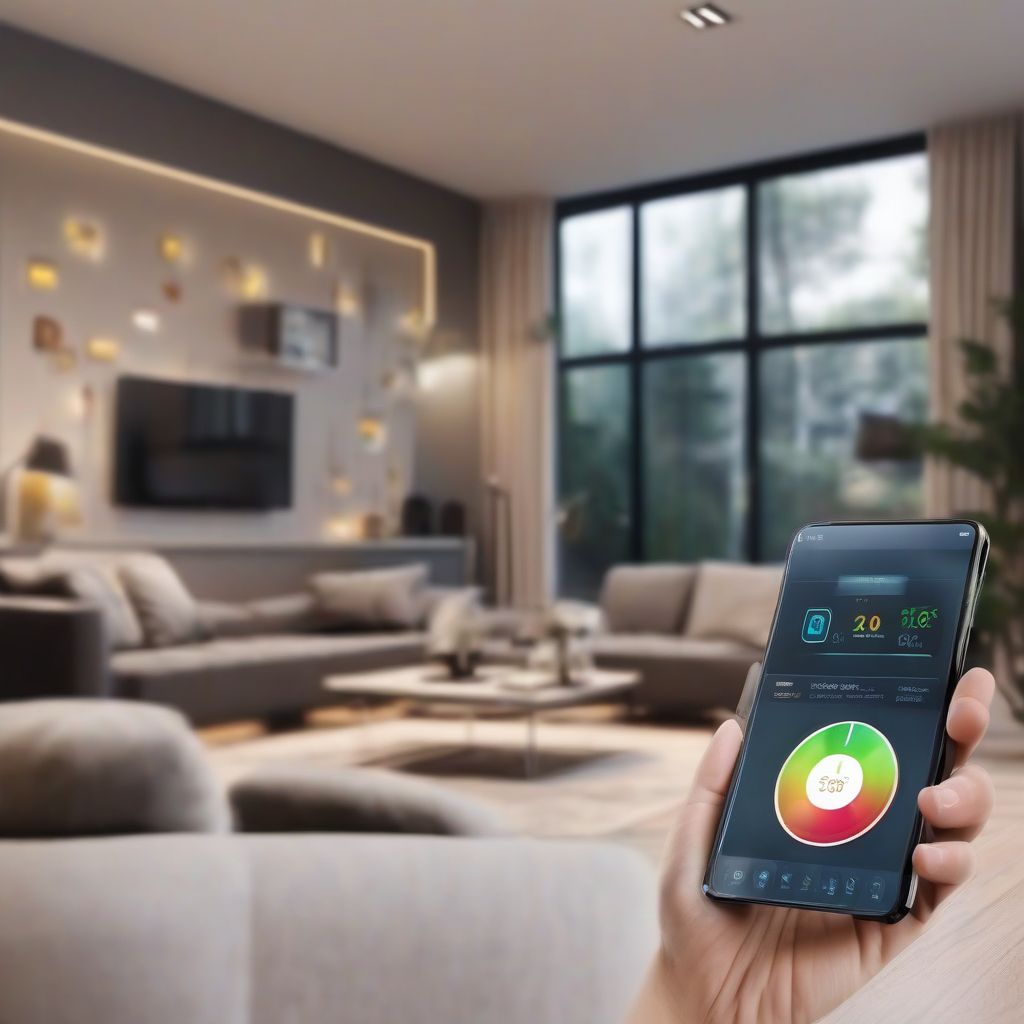Imagine a home where lights magically turn off when you leave a room, the temperature adjusts itself for optimal comfort and energy efficiency, and appliances run only when needed. This isn’t a scene from a futuristic movie; this is the reality of a smart and sustainable home, powered by automation.
What is Home Automation, and How Does it Work?
Home automation uses technology to automate and control various aspects of your living space, from lighting and temperature to security and entertainment. Think of it as a central nervous system for your home, connecting devices and appliances and allowing them to communicate and work together seamlessly.
At the heart of a smart home is a central hub or system that connects all your devices. This can be a dedicated smart home hub, a smartphone app, or even your voice assistant. From this central point, you can control and automate different aspects of your home.
The Interplay of Automation and Sustainability
Now, you might be wondering, “How does automation translate into a more sustainable home?” The answer lies in its ability to optimize resource consumption and reduce waste.
Energy Efficiency: A Top Priority
One of the most significant benefits of home automation is its potential for energy saving. Consider these statistics:
- Heating and cooling: Smart thermostats that learn your preferences and adjust the temperature accordingly can reduce your heating and cooling costs by up to 23%, according to the U.S. Department of Energy.
- Lighting: Automated lighting systems that use motion sensors to turn lights on and off only when needed can significantly cut down on energy waste.
- Appliances: Smart plugs and automated power strips can prevent energy vampires – those devices that consume power even when turned off – from driving up your electricity bill.
Water Conservation: Every Drop Counts
Beyond energy, automation plays a crucial role in conserving another precious resource: water.
- Smart Irrigation: Imagine a sprinkler system that waters your lawn only when necessary, factoring in weather forecasts and soil moisture levels. Smart irrigation systems make this a reality, saving water and ensuring your garden thrives.
- Leak Detection: Water leaks can lead to significant water waste and costly repairs. Smart home systems can detect leaks early on, preventing damage and saving you money in the long run.
 Smart Home Automation System
Smart Home Automation System
Beyond Resource Management: Additional Benefits of a Smart Sustainable Home
While energy and water savings are significant advantages, the benefits of a smart, sustainable home extend far beyond resource management.
Enhanced Comfort and Convenience
Imagine waking up to a gently lit bedroom, the coffee brewing automatically, and your favorite playlist filling the air. Home automation makes these everyday conveniences a reality, enhancing your comfort and simplifying your daily routine.
Improved Safety and Security
Smart home systems can significantly bolster your home’s safety and security through:
- Automated Lighting: Schedule outdoor lights to turn on at dusk, deterring potential intruders.
- Smart Locks: Remotely lock and unlock doors, monitor access, and receive notifications if someone tries to enter unauthorized.
- Smoke and CO2 Detectors: Receive instant alerts on your phone in case of fire or carbon monoxide leaks, even when you’re away from home.
Making Your Home Smart and Sustainable: A Step-by-Step Guide
Transitioning to a smart sustainable home might seem daunting, but you can start small and gradually integrate automation into your living space.
- Identify Your Priorities: Begin by pinpointing the areas where you’d like to see the most significant impact. Is it reducing energy consumption, conserving water, or enhancing home security?
- Start with Small, Strategic Upgrades: You don’t have to automate everything at once. Consider starting with a smart thermostat, energy-efficient appliances, or smart lighting.
- Choose a Central Hub or Platform: Select a central hub or app that’s compatible with your chosen devices. This will be the brain of your smart home, allowing you to control and automate everything from one place.
- Gradually Expand Your Smart Home Ecosystem: As you become more comfortable with automation, you can add more devices and features to your system.
The Future of Smart, Sustainable Living
The role of automation in creating a smart, sustainable home is only going to become more critical. As technology continues to evolve, we can expect to see even more innovative and affordable solutions that empower us to live more sustainably and comfortably.
Conclusion: Embracing a Smarter, Greener Future
The transition to a smart and sustainable home is an investment in a more comfortable, convenient, and eco-friendly lifestyle. By embracing automation, we can significantly reduce our environmental footprint while enjoying the benefits of a connected and intelligent living space.
Are you ready to join the smart home revolution? Start exploring the possibilities today and discover how automation can transform your home and your life.
[amazon bestseller=”smart home hub”]
